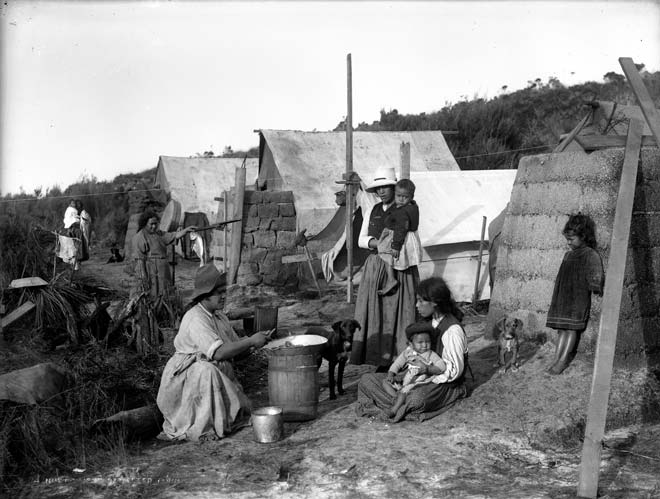
These women and children lived in a temporary settlement on the gumfields at Pārengarenga, Northland, in about 1910. At that time the great majority of Māori retained a rural lifestyle and often, as in this case, they lived in mainly Māori communities in remote locations. The way of life in these communities was generally very different from their traditional patterns of life, but their remoteness from European communities meant that their language and certain customs and practices remained distinctively Māori.
Using this item
Alexander Turnbull Library, Northwood Collection (PA-Group-00027)
Reference:
1/1-006280-G
Photograph by Northwood Brothers
Permission of the Alexander Turnbull Library, National Library of New Zealand, Te Puna Mātauranga o Aotearoa, must be obtained before any re-use of this image.







Add new comment